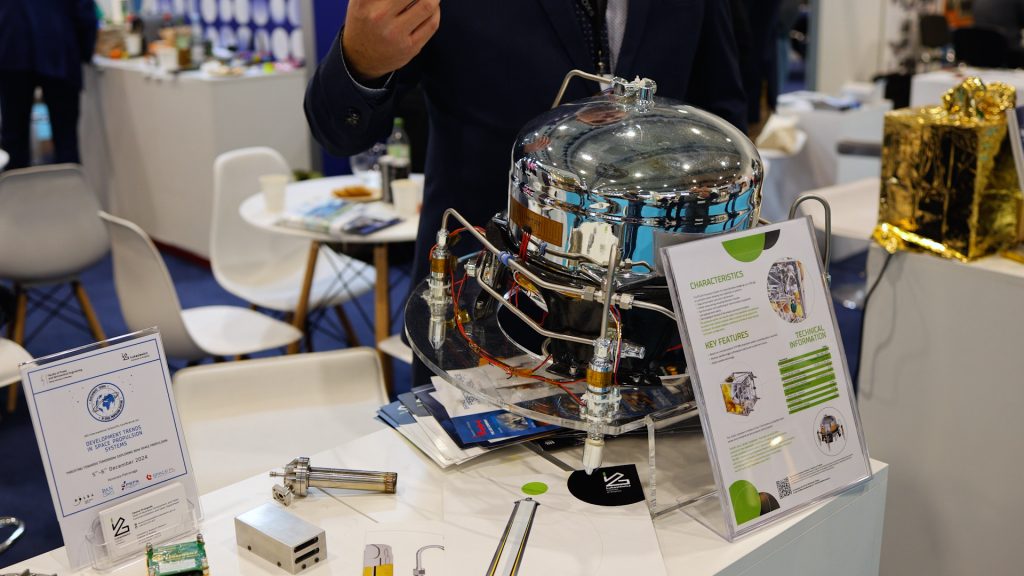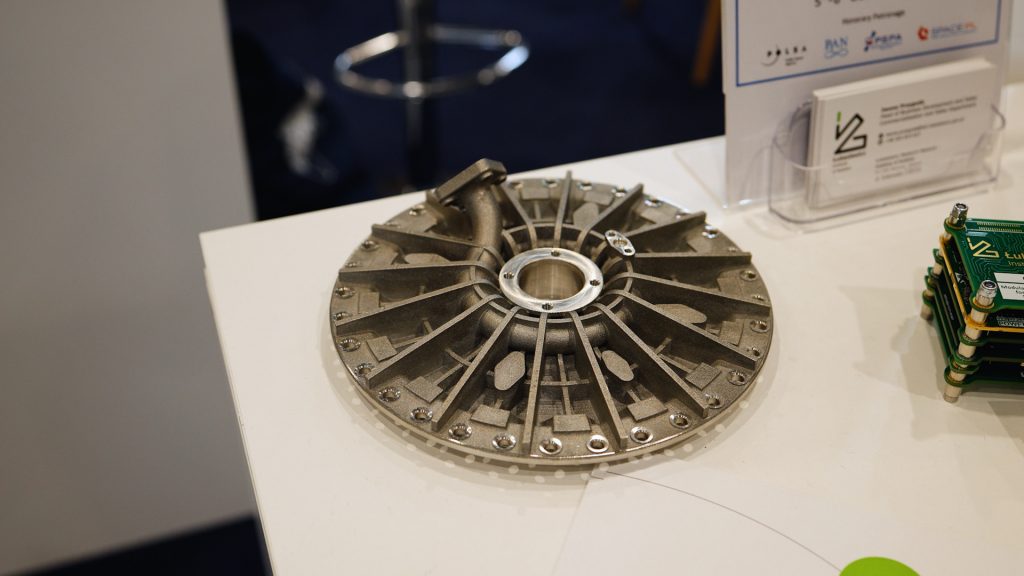Green Propulsion from Warsaw: Scalable Propulsion and De‑Orbit Solutions by Łukasiewicz‑ILOT
The Łukasiewicz Research Network – Institute of Aviation (ILOT) in Warsaw has been advancing propulsion technologies that combine ecological, operational and safety benefits. The current focus includes high‑concentration hydrogen peroxide (HTP) as an oxidizer/monopropellant, modular satellite propulsion units, and throttleable liquid engines for precise manoeuvres and potentially reusable stages. The interview at Space Tech Expo Europe outlined the status, design rationale and intended applications.
Space Tech Expo Europe Special – Interview with Kamil Sobczak (Łukasiewicz Research Network – Institute of Aviation, ILOT)
“We focus not only on thrusters but on full propulsion modules for space platforms, including green propellants and de‑orbitation systems.”
Who is Łukasiewicz‑ILOT?
ILOT is part of Poland’s Łukasiewicz Network. In space, the institute works on propulsion, additive manufacturing of engine components, electronics/avionics and end‑of‑life solutions. Suborbital missions serve as a testbed for hardware and integration.
Focus: Green Propulsion with HTP
High‑concentration hydrogen peroxide is presented as a promising alternative to hydrazine‑based systems. ILOT develops propulsion and modules that use HTP as oxidizer (bi‑propellant) or as monopropellant. The goals: simplify mission architectures, make ground handling safer and strengthen the European supply chain.
Technical context in brief:
- HTP‑based AOCS/station‑keeping thrusters and scalable modules for LEO missions.
- Bi‑propellant approaches (HTP plus storable fuel) for higher performance.
- Qualification along standard test procedures; use of additive manufacturing to embed complex cooling channels and geometries in liquid‑cooled combustion chambers.
Propulsion modules for small satellites
ILOT follows a modular system logic: rather than single thrusters, the emphasis is on complete propulsion subsystems—including tank, valves, control and electronics. For small platforms, compact units are targeted; the interview mentions a very lightweight module (≈ 2–3 kg) for formation‑flying demonstrations, currently in development (as outlined in the interview). For larger classes, modules for platforms up to roughly 200 kg are discussed. This opens options for orbit raising, collision avoidance and precise station‑keeping, while reducing integration burden for satellite primes.
Throttleable liquid‑propulsion demonstrator
In addition to monopropellant solutions, ILOT is working on a throttleable liquid demonstrator using HTP + ethanol. The interview indicates a thrust variation of roughly 10% to 110%, aiming at fine orbital manoeuvres, gentle descent of stages and potential reusability scenarios. Additively manufactured, liquid‑cooled combustion chambers and optimised injectors are key building blocks.
Electronics and OBC
The institute develops on‑board computers and avionics in parallel, with suborbital campaigns used for validation. The combination of in‑house electronics and propulsion subsystems supports a compact, qualification‑ready building‑block approach—from telemetry to engine control.




End‑of‑life: De‑orbit systems
For EOL, ILOT addresses a solid de‑orbit motor for controlled disposal at mission end. The design targets long on‑orbit storage and robust activation scenarios in line with modern debris‑mitigation guidelines.
Suborbital milestone
The team points to the ILR‑33 “Bursztyn 2K” reaching space from Andøya (Norway) in 2024. The flight serves as a testbed for propulsion, electronics and integration processes and paves the way for further demonstrations—potentially with commercial payloads.
Why it matters for operators
For small‑sat platforms, in‑orbit services or technology demonstrators, three practical touchpoints stand out:
- Simplified integration: pre‑configured propulsion modules reduce development and integration load.
- Safer operations: HTP‑based solutions can ease handling and operations.
- Expanded mission envelopes: throttleable liquid engines enable finely tuned manoeuvres and new mission geometries.
ILOT continues on two tracks: miniaturised modules for very small platforms and scalable systems for larger LEO satellites—supported by additive manufacturing, qualification testing and suborbital demonstrations. A key question for integrators is how the combination of HTP modules, OBC and de‑orbit options can be translated into standardised satellite buses.
We look forward to continuing these inspiring discussions at Space Tech Expo Europe 2025 and to gaining further insights into the future of connected space technologies.
Note for visitors: Our team will be on site at Booth F11, together with our partners 3D PLUS, Omnetics, and Exxelia.
Image credits: MSA Components / Space Tech Expo Europe interview stills

